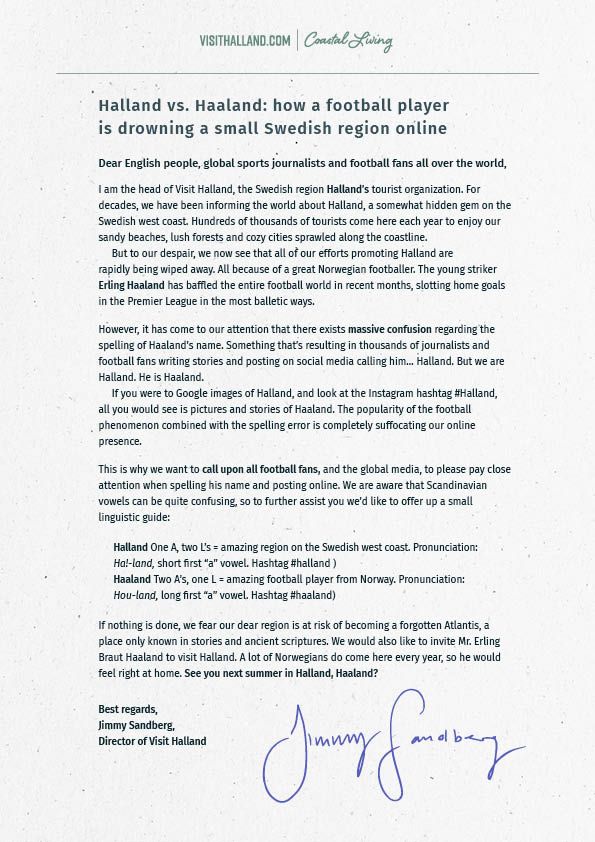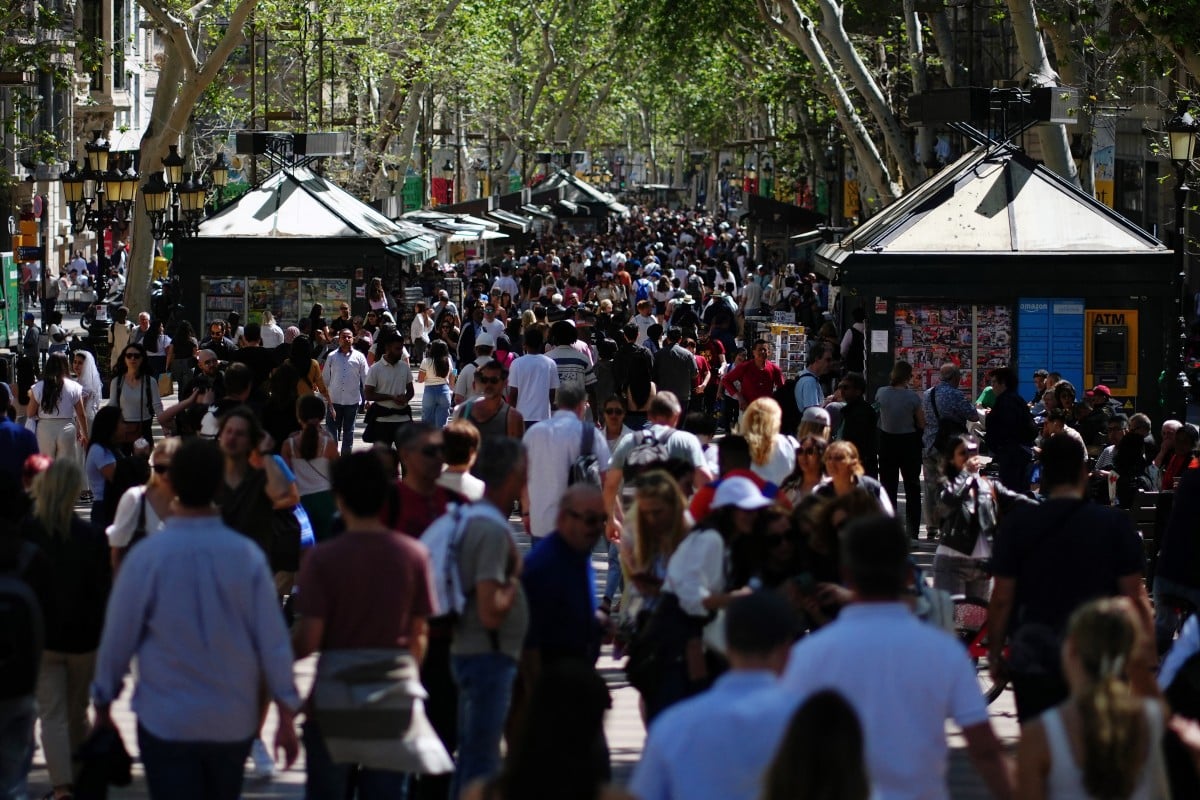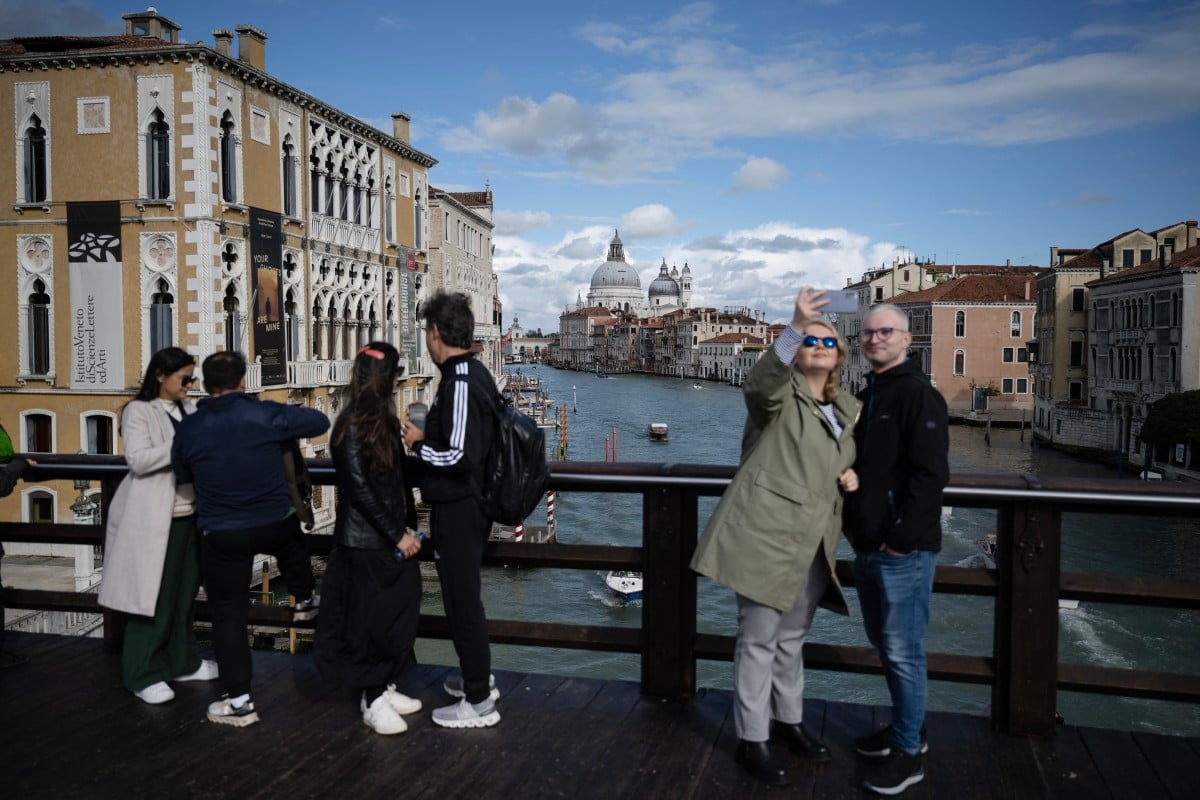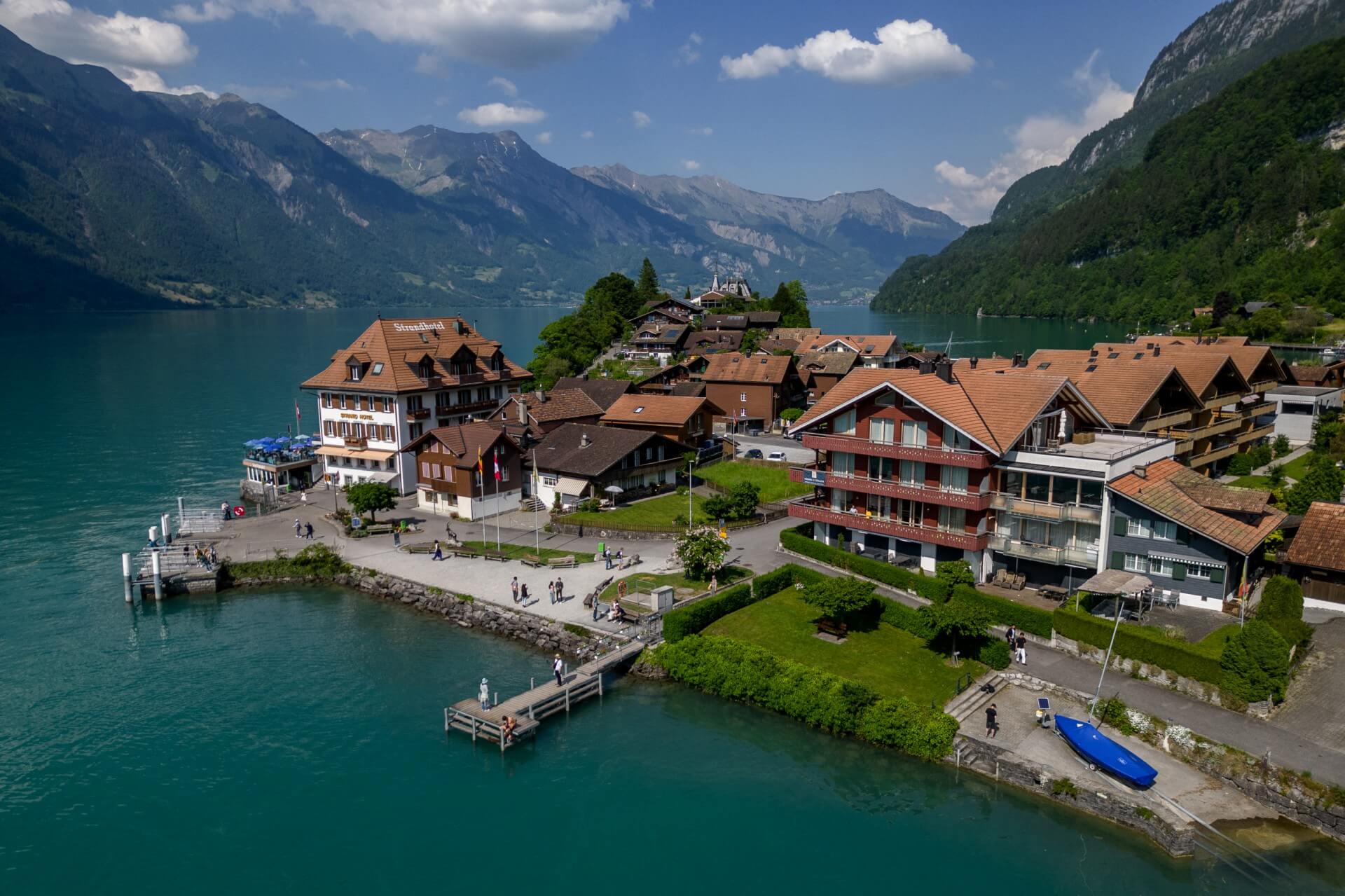Haaland has scored a phenomenal 22 goals in the 15 games he has played in since joining Manchester City this season, generating vast numbers of posts on social media and online.
But for Halland, the country on Sweden’s west coast that is home to the resort town of Varberg, this has been a minor marketing catastrophe.

“We are Halland. He is Haaland. The popularity of the football phenomenon is completely suffocating our online presence,” Jimmie Sandberg, the head of Visit Halland wrote in an open letter.
“To our despair, we now see that all of our efforts promoting Halland are rapidly being wiped away. If nothing is done, we fear our dear region is at risk of becoming a forgotten Atlantis, a place only known in stories and ancient scriptures.”
In the letter, which was posted on his LinkedIn page, with leading football journalists tagged, Sandberg admonished international journalists to check their spelling when covering the footballer, and even included a guide to Scandinavian pronunciation.
“We want to call upon all football fans, and the global media, to please play close attention when spelling his name and posting online. We are aware that Scandinavian vowels can be quite confusing, so to further assist you we’d like to offer up a small linguistic guide:
Halland: one A, two L’s = amazing region on the Swedish west coast. Pronunciation: Ha!-land, short first “a” vowel. Hashtag #halland
Haaland: two A’s, one L = amazing footballer from Norway. Pronunciation: Hou-land, long first “a” vowel. Hashtag: #haaland.”
Here’s the letter in full:

Sandberg told The Local that the issue was still a relatively minor one for the region.
“We were working on our online presence, and then, all of a sudden, when, when Haaland moved to Manchester City, we saw that that he’d started to show up in our searches. We were looking mainly at image search for Halland, and what we saw what that his presence became bigger and bigger, and it was almost only Haaland in all the image searches we did.”
“It’s not a huge problem at the moment,” he continued. “But when when you have 20 million followers on Instagram, for example, and 1000s of articles are being written about you, and maybe 1 percent are spelt wrong, this causes some problems for us.”
He said that after brainstorming what to do about it, his team had decided to write an open letter, post it on LinkedIn and tag some sports journalists to see if they could get some coverage.
“We hoped that Hallands Posten, our local newspaper here would write something fun about it, ” he said. “And then, of course, the dream scenario was that people would actually bring attention to this and see that they’re actually spelling his wrong.”‘
The last few days, though, he said, had been “totally crazy”, he said, with Reuters, the BBC, and even a Nigerian newspaper writing about it.
“My God, Tylösand, the pearl of our beaches, is being mentioned in a Nigerian newspaper!” he exclaimed.
He said he suspected that the coverage would not solve the problem with misspellings, but had at least got his region some attention.
“Maybe we can get it down to 0.5 percent,” he said of people referring to the footballer online as ‘Halland’. “And that would be lovely.”







 Please whitelist us to continue reading.
Please whitelist us to continue reading.
Member comments